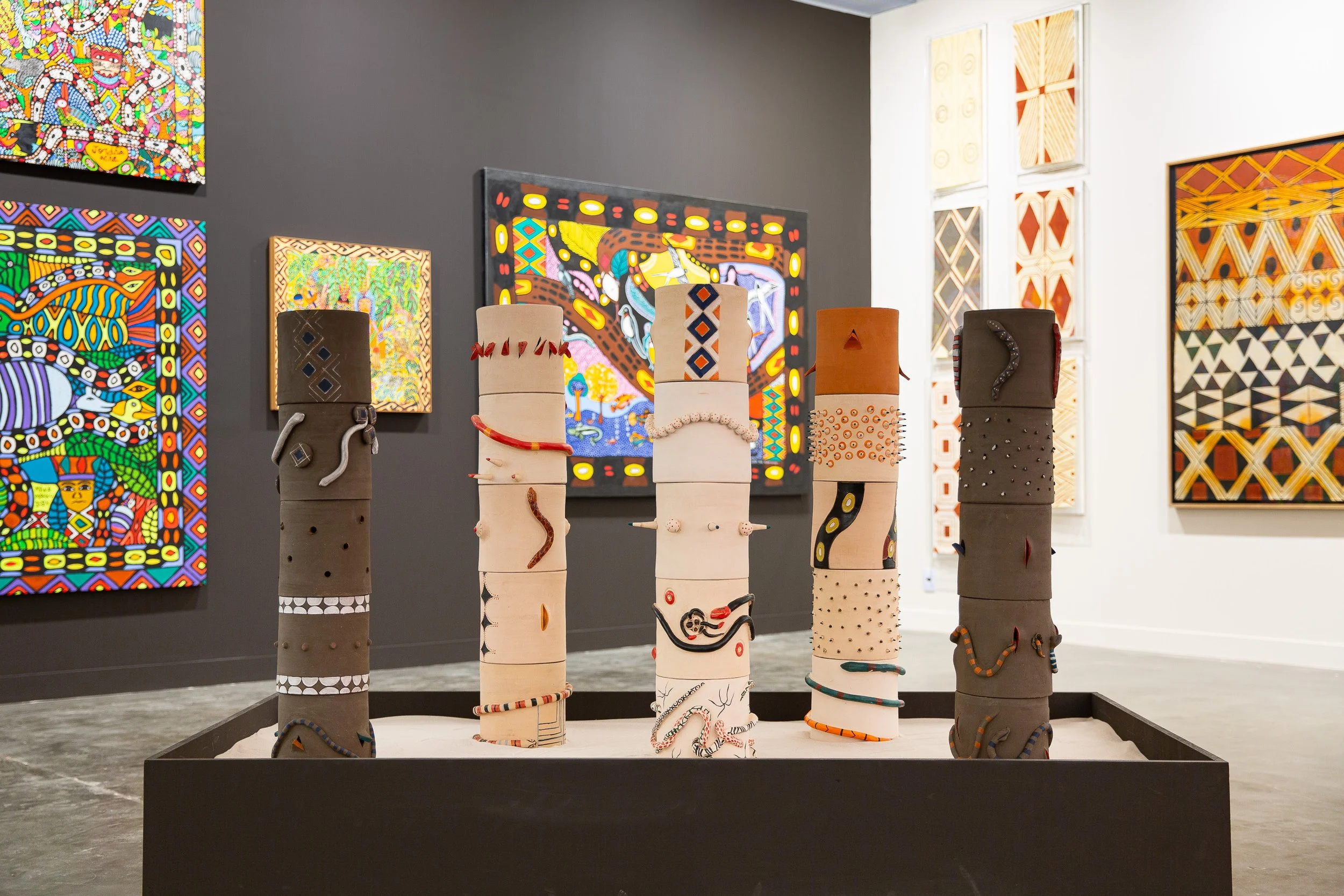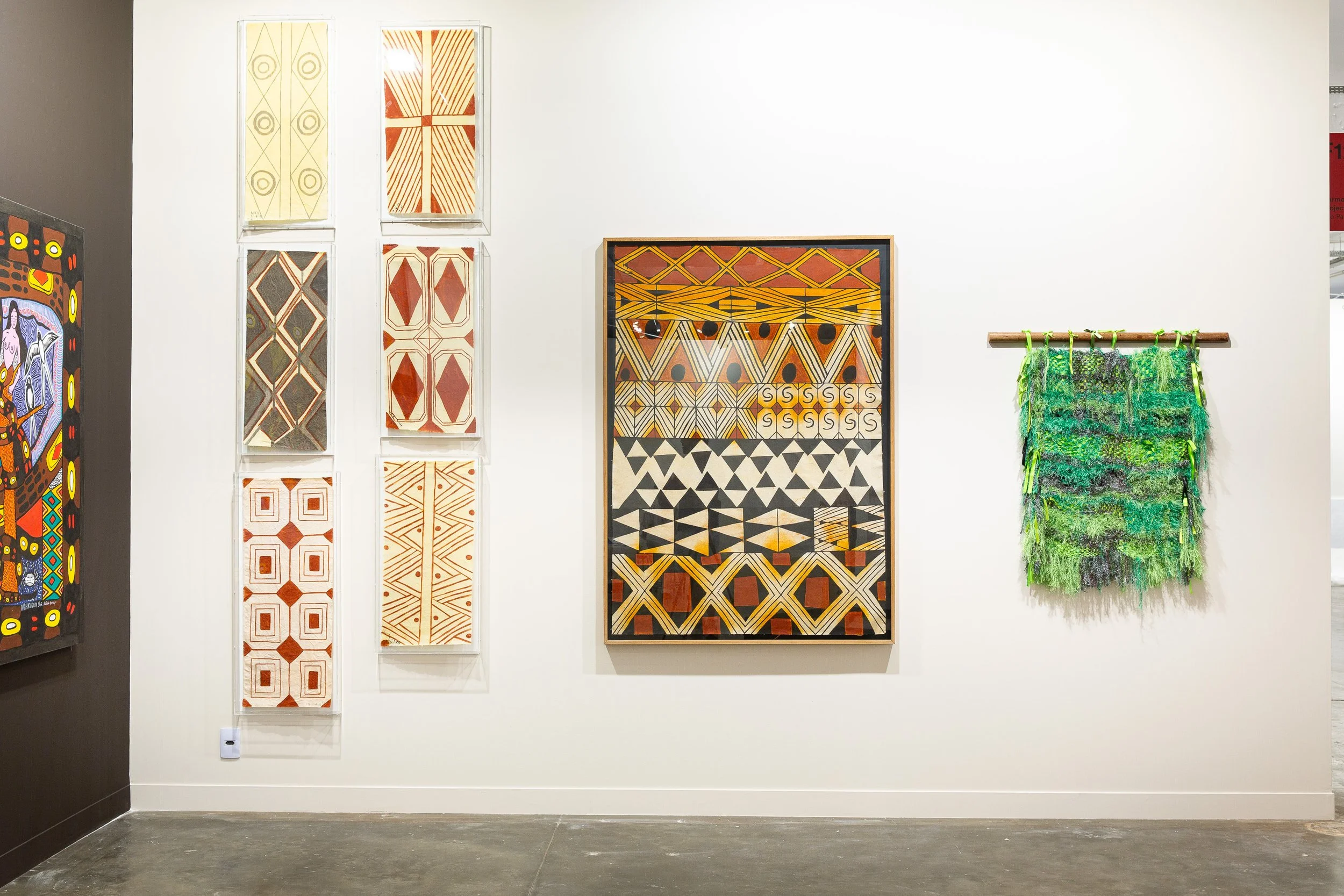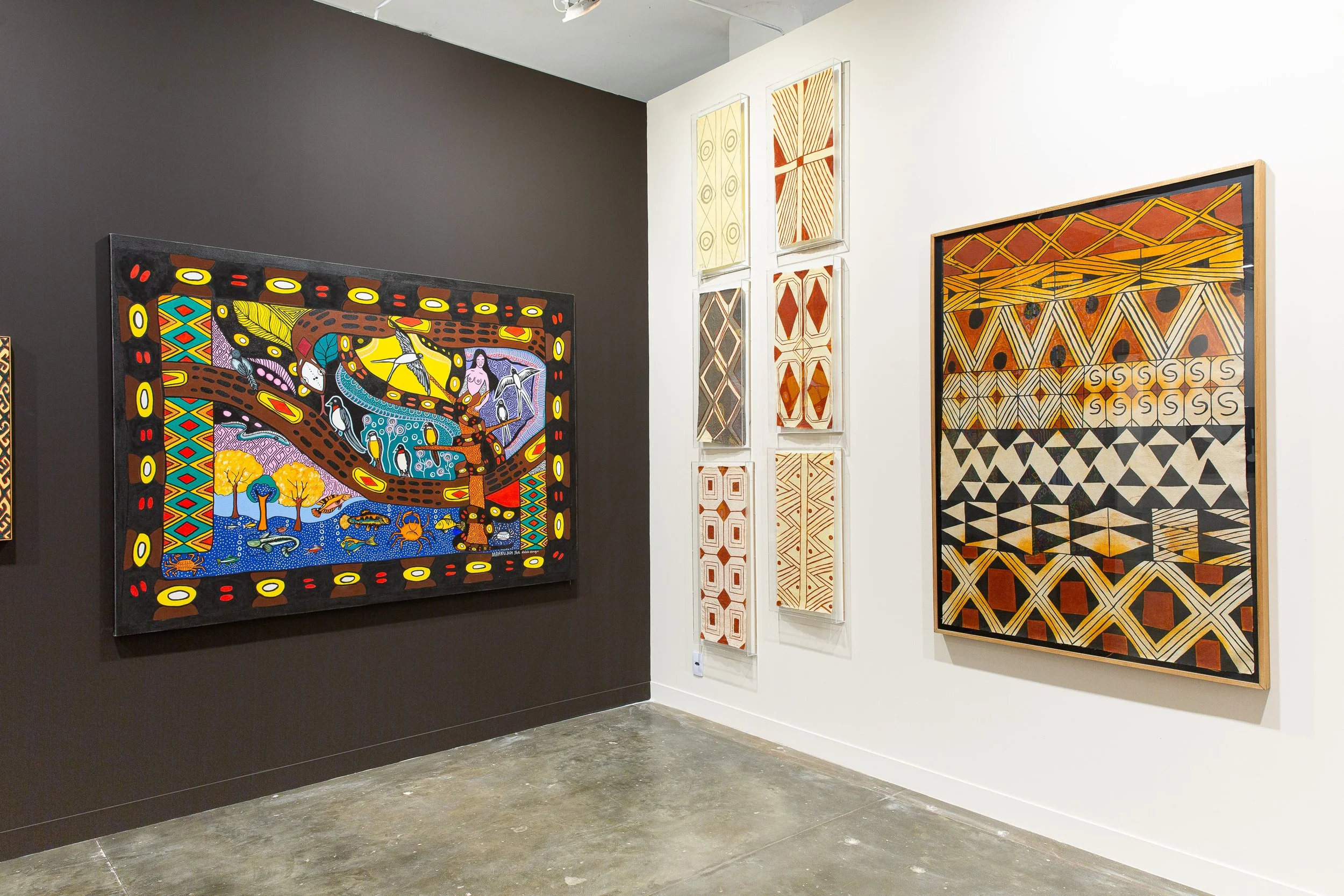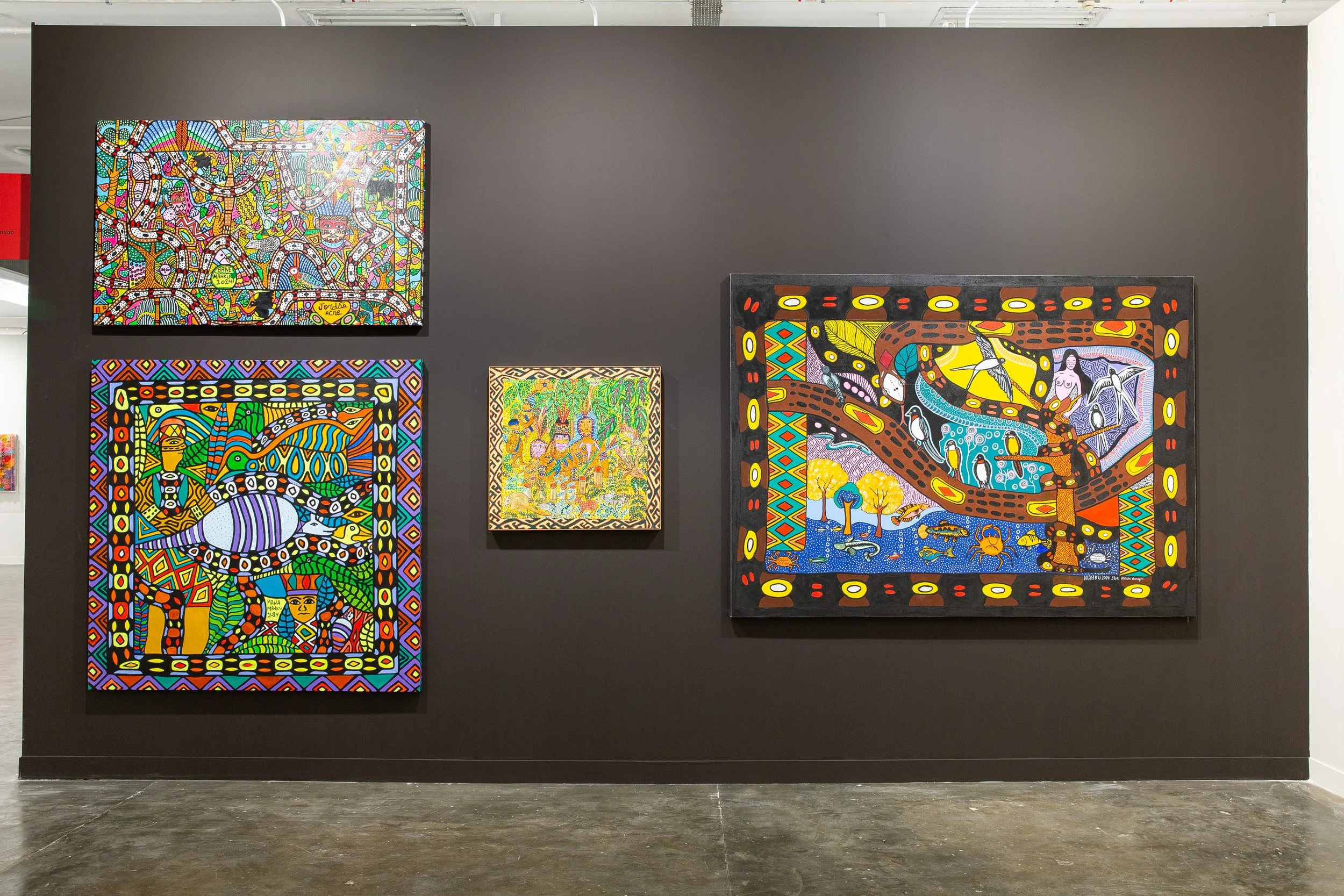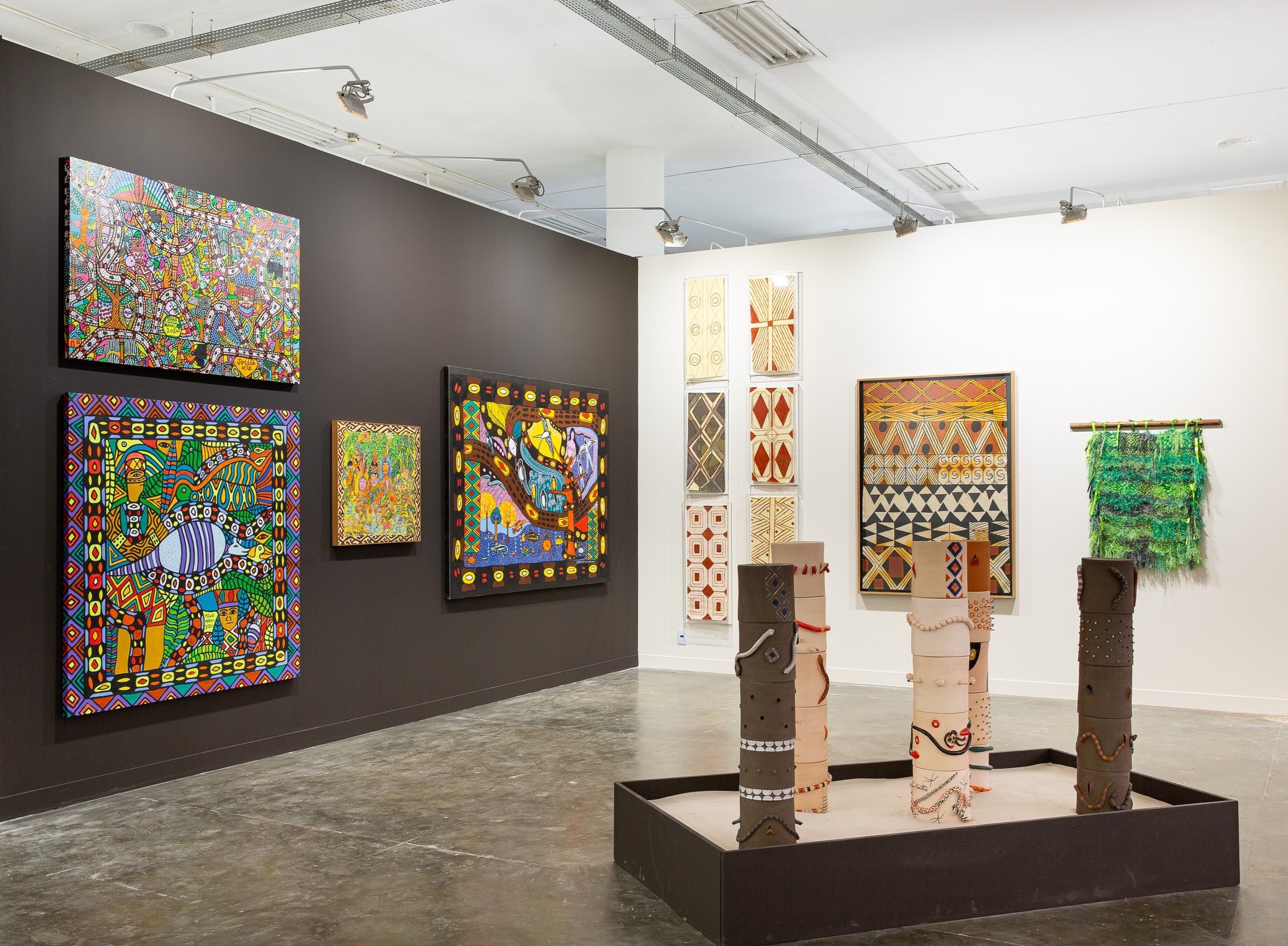
SP-ARTE 2024
Apresentando MAHKU, Kássia Borges, Kaya Agari e Naine Terena.
For the twentieth edition of SP-ARTE, we present a development of the collection exhibition YUXIN MESHTIKA - Encontro de espíritos, open to the public from April 2, 2024, with a critical text by Kássia Borges.
Featuring MAHKU - Movimento dos Artistas Huni Kuin (Chico Curumin Village - Jordão - Acre - Brazil, 2012), Kássia Borges (Goiânia, 1962), Kaya Agari (Cuiabá, 1986) and Naine Terena (Cuiabá, 1980), the gallery promotes a meeting of spirits, languages, cosmologies, aesthetics and activism between contemporary indigenous artists.
The MAHKU artists, that in 2024 will be taking their paintings to the façade of the Venice Biennale's central pavilion in a monumental 750-square-meter work, are bringing to SP-Arte the vibrant colors of the mirages guided by the chants that lead to the sacred medicine of the nixi-pae (ayhuasca) and the myths of the Huni Kuin culture. They use painting as an aesthetic and political tool of cultural resistance to a tradition that was on the verge of extinction and of restitution of land in the Amazon rainforest, lost during the predatory economic cycle of rubber.
Following the need for cultural revival, Kaya Agari transports the Kywenu, her ethnic group's Kurã-Bakairi body painting, onto canvas and fabric. Understanding her work as a means of perpetuating a culture that goes back to the ancestry of artistic making, the artist traces the lines and colors with natural pigments that form an alphabet of meanings. The Kurã-Bakairi tradition has the Kuamoty spirit as the creator of its people and the initiating agent of the knowledge of body painting.
Naine Terena, artist, researcher and activist, is a central figure in the debate on contemporary Brazilian indigenous art, having curated the exhibition Véxoa: Nós sabemos at the Pinacoteca de São Paulo between 2020-21. Her artistic production focuses on the creation of objects and images that challenge the rigid notion of art through the interweaving of traditional Terena threads and looms, her ethnicity, and human interference in the world.
Crawling between clay and the ground, Kássia Borges, a Ynã [Karajá] artist, builds totemic figures that narrate feminine paths within the cosmology of her culture. Discussing origin and ancestry, the artist presents ceramic totems made up of snakes, vulvas and teats; figures that carry the powers of spiritual connection and the ritualistic making of the work of art.
We present a set of works that show how indigenous aesthetic movements open up to a new moment in the history of art and unveil a unique universe of new experiences of aisthesis.
